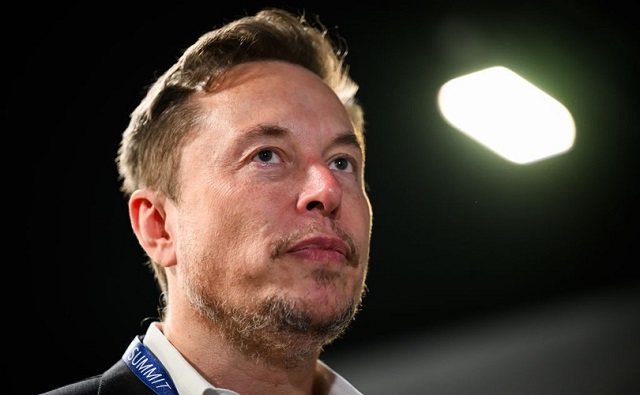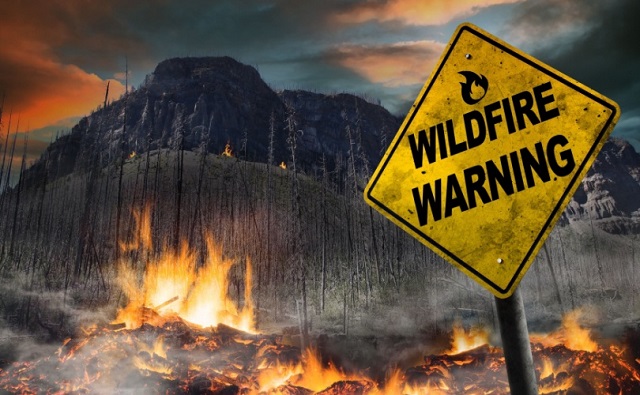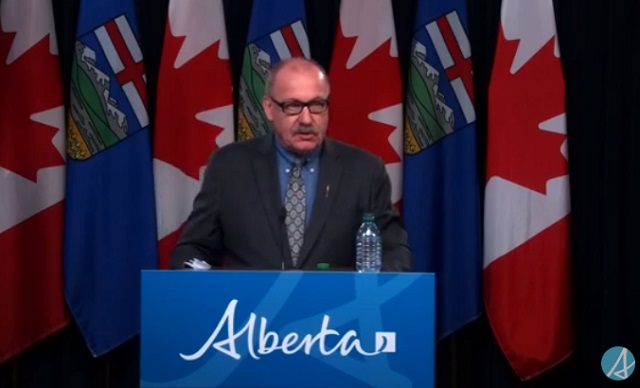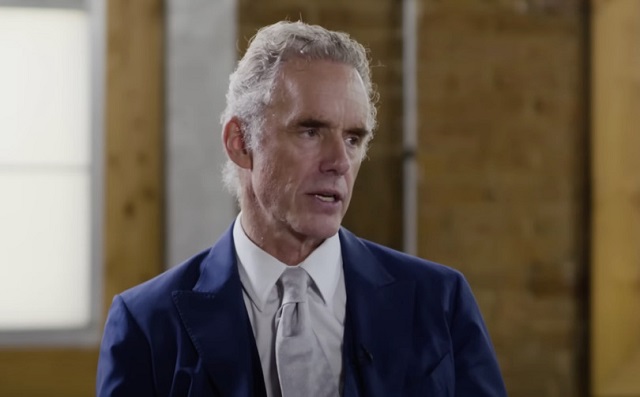Economy
The case against Net Zero 2050

Fossil fuels expert Alex Epstein shares everything you need to know about fossil fuels and what the world would really look like if we were “net zero” by 2050.
—
Alex Epstein is a philosopher and energy expert who argues that “human flourishing” should be the guiding principle of industrial and environmental progress. He is the author of the New York Times bestseller, “The Moral Case for Fossil Fuels,” and his latest book, “Fossil Future.”
For months I have been eagerly anticipating a scheduled debate I had at the University of Syracuse on “net zero by 2050” with climate catastrophist and net-zero advocate Tom Rand.
Unfortunately, due apparently to some sort of weird contractual issue between Tom’s agent and the university, Tom did not make it to the debate.
Since I was supposed to be in a debate, but there was no one to debate, I thought the best I could make of the situation would be to give a speech refuting every single argument for “net zero by 2050” that Tom and others make. It ended up being one of my favorite speeches ever; you can watch it here. We’ve also embedded the video below.
Below I have included all the “net zero” myths I covered , and then some. I think you’ll find them, along with the positive points about energy freedom, very valuable.
Myth: The best policy toward CO2 emissions is “net zero by 2050.”
Truth: Net-zero policies have been catastrophically destructive when barely implemented and would be apocalyptically destructive if fully implemented.
They should be abandoned in favor of energy freedom policies.
How to think about the right policy toward fossil fuels and their CO2 emissions
- What are “net zero by 2050 policies”?Government (coercive) actions whose primary and binding goal is the net-elimination of CO2 (and other GHG) emissions, whose number one source is fossil fuel use, by 2050.
In practice “net zero” means: rapidly eliminate most fossil fuel use.
- One “net zero” policy is an extremely high “carbon tax,” like “$1000/ton.”This would mean, in practice:
- 3-4 times higher prices for gasoline in Texas
- 9 times higher electricity prices in West Virginia
- 4-5 times higher prices for heating with natural gas
- What are “energy freedom policies”?Government actions to protect the ability of producers to produce all forms of energy and consumers to use all forms of energy, so long as they don’t engage in reasonably preventable pollution or endangerment of others.
- Energy freedom policies include:
- Protecting the freedom to develop fossil fuels and other forms of energy. E.g., deep geothermal development.
- Protecting the freedom to use fossil fuels and all other forms of energy. E.g., “decriminalizing nuclear.”
- Interesting: the 2 biggest instances of CO2 reduction have come from energy freedom policies:
- Nuclear: Freedom led to cost-effective and scalable nuclear power until the “green” movement virtually criminalized it.
- Gas: Freedom led to significant substitution of gas vs. coal.
- Myth: Net-zero policies are new and exciting.
Truth: Net-zero policies have caused catastrophic energy shortages even with minuscule implementation. Just by slowing the growth of fossil fuel use, not even reducing it, they have caused global energy shortages advocates didn’t warn us of. - Minuscule net-zero policies causing huge problems:
- US: Frequent power shortages (and some disastrous blackouts) after shutting down fossil fuel power plants. E.g., CA
- EU: Deadly fossil fuel dependence after restricting domestic fossil fuel industry
- Poor nations: Can’t afford fuel due to global restrictions1

- The root problem with “net zero by 2050”It violates a basic principle of rational thinking, which is that when evaluating what to do about a product or technology—e.g., prescription drug—you need to carefully weigh the benefits and side-effects of your alternatives.
- Myth: If there are negative climate side-effects of continuing fossil fuel use we should get them to net-zero as soon as possible.Truth: We should carefully weigh them against the benefits that come with them, including positive climate side-effects, climate mastery abilities, and many broader benefits.
- It is particularly crucial to weigh any negative climate side-effects of continuing fossil fuel use against the climate mastery benefits that come with them, as those benefits can neutralize or overwhelm negatives.E.g., more energy powering heating and cooling, irrigation, infrastructure-building, etc.
- Example of fossil-fueled climate mastery overwhelming negative impacts: Drought.Any contribution of rising CO2 to drought has been overwhelmed by fossil-fueled irrigation and crop transport, which have helped reduce drought deaths by over 100 times over 100 years as CO2 levels have risen.2

- An irrefutable method for thinking about policy toward fossil fuels and their CO2 emissions1 Factor in broad benefits
2 Factor in climate mastery benefits
3 Factor in positive and negative climate side-effects (from rising CO2)No net-zero advocate has refuted it, yet none follow it.
- How net-zero advocates fail to weigh benefits and side-effects of fossil fuels
- Factor in broad benefits – Deny or trivialize
- Factor in climate mastery benefits – Deny
- Factor in positive and negative climate side-effects – Deny or trivialize positives, Catastrophize negatives = Overstate, Deny mastery
- If we follow the irrefutable principles of weighing benefits and climate side-effects of continuing fossil fuel use, using undeniable facts and mainstream science, it is obvious that “net zero by 2050” would be apocalyptically destructive and that the right path forward is energy freedom.
Applying fossil fuel policy principle 1: Factoring in the broad benefits of continuing fossil fuel use
- Myth: The benefit of continuing fossil fuel use is trivial at best.Truth: The benefit of continuing fossil fuel use is a world in which 8 billion people have the energy they need to survive and flourish—vs. an energy-starved world in which most of the world’s 8 billion people suffer from poverty and premature death.
- Myth: There are no real benefits of continuing fossil fuel use because it can be rapidly replaced by mostly solar and wind.Truth: fossil fuels are and for decades will remain uniquely cost-effective: affordable, reliable, versatile—on a scale of billions of people in thousands of places.
- Myth: Fossil fuels are being rapidly replaced in an “energy transition” to solar and wind.Truth: Fossil fuel use is 80% of the world’s energy and still growing despite 100+ years of aggressive competition and 20+ years of political hostility and massive solar and wind favoritism.3

- Myth: Fossil fuel use will soon rapidly decline because countries know “green” energy will be cheaper.Truth: Countries that care most about cheap energy are pro-fossil fuels.
E.g., China, which uses mostly coal to produce “green” tech, has over 300 planned new coal plants designed to last over 40 years.
- Myth: Solar and wind are growing fast by outcompeting fossil fuels with superior economics.Truth: Solar and wind are growing fast only when given massive government preferences—mandates, subsidies, and no penalty for unreliability—along with crippling government punishments of fossil fuels.
- Myth: Solar and wind are now cheaper than fossil fuels.Truth: For the overwhelming majority of the world’s energy needs, solar and wind either can’t do what fossil fuel can—e.g., non-electricity energy uses such as airplanes or cargo ships—or are far more expensive.
- Myth: Solar and wind electricity is getting so cheap that will lead to rapid electrification of the 4/5ths of today’s energy that is not electricity.Truth: When you factor in the full cost of the 24/7 life support that unreliable solar and wind electricity need, they are far more expensive.4

- Myth: Solar and wind plus batteries will inevitably be super-cheap because of efficiency increases driving lower production costs and higher performance.Truth: Their cost is astronomical today and has a large mining component whose costs will increase if scaled artificially quickly.5

- Even relatively mild increases in demand for critical minerals in recent years have led to scaling issues and cost increases—reversing a trend of falling prices that solar and wind advocates pretended would last forever.What will rapid scaling plus anti-mining policies do?6

- Myth: Rapidly eliminating fossil fuels will make us more energy-secure.Truth: We’d be far less energy secure because 1) we’d have drastically less energy, period, and 2) we’re far more dependent on China for key components of solar, wind, and batteries than we are on Russia for fossil fuels.7

- Myth: Reliable alternatives to fossil fuels, such as nuclear and geothermal, can rapidly replace fossil fuels.Truth: While these industries have potential that we should unleash, they are generations away from providing, on a global scale, energy that’s affordable, reliable, and versatile.8

- Myth: Academics have rigorous plans to replace fossil fuels with mostly solar and wind
Truth: All these “plans” involve 2 absurdities: 1. Unprecedented mining and construction in today’s anti-development political environment will be cheap.
2. Untested schemes will be cheap, everywhere, the first time. - “Net zero” plans to scale solar and wind involve more than doubling the supply of half a dozen major mined materials per decade.I know of no example, ever, of any major mined mineral doubling that fast, even with pro-development governments—let alone today’s anti-development governments.9

- All “net zero” by 2050 plans involve totally untested schemes, both for
- Electricity: Solar and wind somehow being the basis of cheap, reliable electricity.
- Other energy: Myriad electric or hydrogen vehicles (e.g., planes, ships) that are nowhere near commercial reality.10

- Myth: Carbon capture will soon allow us to have global cost-effective energy without CO2 emissions.Truth: While cost-effective carbon capture is worth exploring (e.g., using CO2 for industry or agriculture), there’s no evidence that most emissions can be captured cheaply.

- Summary: Fossil fuels are, and for decades will remain, uniquely cost-effective: affordable, reliable, versatile—on a scale of billions of people in thousands of places.
Policy implications:- Energy freedom —> global cost-effective energy
- Net zero —> very little cost-effective energy
- When “net zero by 2050” advocates are forced to concede that their policies would (at minimum) dramatically reduce the availability of energy, they revert to the myth that cost-effective energy is only of modest importance compared to CO2 emissions reductions.
- Myth: Cost-effective energy isn’t nearly as important as CO2 reductions, which affect Earth’s livability.Truth: The cost-effectiveness of energy determines Earth’s livability because it allows us to use machines turn a naturally inhospitable planet into an abundant and safe place.11

- Myth: The Earth will be a highly livable place—stable, sufficient in resources, and safe—as long as we don’t impact it too much.Truth: Earth is very inhospitable—dynamic, deficient, dangerous—unless we have the productive ability to transform and impact it to be abundant and safe.
- Myth: Energy is just one of many factors affecting to what extent we can flourish on this naturally inhospitable planet.Truth: The cost-effectiveness of energy is fundamental to human flourishing because it determines our ability to use machines to become super-productive.
- Myth: Fossil Fuels aren’t the reason the Earth is so livable now—it’s much more medical care, sanitation, scientific progress, and technological progress.Truth: Cost-effective fossil fuels underlie them all: freeing up time for them, powering their machines, and providing raw materials.12

- Myth: The benefits we’ve gotten from uniquely cost-effective fossil fuel energy are modest at best compared to their downsides.Thanks to our fossil-fueled productivity, longevity and income have been skyrocketing, with extreme poverty (<$2/day) plummeting from 42% in 1980 to less than 10% today.13

- Myth: Rapidly eliminating uniquely cost-effective fossil fuel energy won’t be that bad because we can save a lot energy via efficiency.Truth: Not only could people in the wealthy world benefit from more energy, the vast majority of the world needs much more energy to get out of poverty.
- The desperate need for far more of the global-scale cost-effective energy that only fossil fuels can provide near-term:
- 1/3 of the world uses wood and animal dung for heating and cooking.
- 3 billion use less electricity than a typical American refrigerator.14

- Myth: Poor countries will “leapfrog” fossil fuels and go right to solar and wind.Truth: No rich country has been able to abandon fossil fuels even at huge cost, while every dramatic increase in wealth has involved fossil fuels: Japan, Singapore, South Korea, China, etc.
Poor countries are not guinea pigs.
- Any invocation of “efficiency” to pretend that the world doesn’t need far more energy amounts to cruel indifference to the enormous energy needs of the world’s poorest people.
- Summary: Fossil fuels are a near-term irreplaceable source of the cost-effective energy humans need to flourish.Policy implications
- Energy freedom —> Billions more will have the opportunity to flourish.
- Net zero —> Billions of energy-starved people plunge into poverty and early death.
Applying fossil fuel policy principle 2: Factoring in the climate mastery benefits of continuing fossil fuel use
- Myth: Our weak “adaptation” abilities are already overwhelmed by climate changes.Truth: Our fossil-fueled climate mastery abilities have completely overwhelmed any negative changes plus huge natural danger—meaning we can overcome almost any conceivable future climate challenge.
- Myth: We are more endangered than ever by climate because of fossil fuels’ CO2 emissions.Truth: We have a 98% decline in climate disaster deaths due to our enormous fossil-fueled climate mastery abilities: heating/cooling, infrastructure-building, irrigation, crop transport.15

- Myth: Climate-related disaster X shows that fossil fuels are making climate unlivable.Truth: If we look at trends, not anecdotes, the drastic decline in extreme weather deaths shows that fossil fuels have made our naturally dangerous climate more livable than ever.16

- Myth: The decline in climate disaster deaths is due to storm warning systems, not fossil fuels.Truth:
- Fossil fuels power storm warning and evacuation systems.
- Drought, not storm, deaths are the leading source of climate death reduced.17

- Myth: Even if climate-related disaster deaths are down, climate-related damages are way up, pointing to a bankrupting climate future.Truth: Even though there are many incentives for climate damages to go up—preferences for riskier areas, government bailouts—GDP-adjusted damages are flat.18

- Myth: Adaptation to future climate changes is expensive, while “mitigation”—avoiding CO2 emissions—is relatively cheap.Truth: We’ve seen that using fossil fuels we can be ever-wealthier and safer from climate, vs. even minor “mitigation” has caused deadly energy shortages and poverty.19

- Myth: Even if we’re safe from climate now, we can expect future emissions to lead to disaster.Truth: Since today’s unprecedented safety exists after 100+ years of rising CO2, and with 1° C warming, we should be skeptical that further CO2 rises will somehow overwhelm us.
- Summary: A crucial benefit of uniquely cost-effective fossil fuel energy is enormous climate mastery abilities.Policy implications
- Energy freedom —> We’ll get ever-better at mastering climate danger, natural or manmade.
- Net zero —> Climate danger will dramatically increase.
Applying fossil fuel policy principle 3: Factoring in the positive and negative climate impacts of continuing fossil fuel use (with precision)
- Myth: Mainstream science shows that rising CO2 is an “existential threat” that will soon cause global catastrophe and then apocalypse.Truth: Mainstream science shows that rising CO2 levels will lead to levels of warming and other changes that we can master and flourish with.
- Myth: Media “expert” claims of future climate disaster are likely to be credible.Truth: Such claims are only credible if the expert factors in climate mastery (which almost none do) and does not engage in the popular practice of distorting climate science for effect.20


- Myth: If mainstream science concludes that we will experience more warming, storm intensity, or sea level rises, that means catastrophe or worse.Truth: Given climate mastery, catastrophe could only occur with changes that are a total difference in kind from rising CO2 so far.
- Climate mastery is so powerful that for CO2 emissions to be apocalyptic enough to justify rapid fossil fuel restriction, let alone elimination, they’d need to have unprecedented impacts, such as
- Seas rising feet per decade
- 2X more powerful storms
Science shows nothing like this.
- Myth: Future warming is ominous because heat-related death is already such a catastrophic problem.Truth: Even though Earth has gotten 1°C warmer, far more people still die from cold than heat (even in India)! Near-term warming is expected to decrease temperature-related mortality.21

- Myth: Future warming is ominous because it will be worst in hot areas.Truth: The mainstream view in climate science is that more warming will be concentrated in colder places (Northern latitudes) and at colder times (nighttime) and during colder seasons (winter). Good news.22

- Myth: Future warming will accelerate as CO2 levels rise.Truth: Mainstream science is unanimous that the “greenhouse effect” is a diminishing effect, with additional CO2 leading to less warning.
Even IPCC’s most extreme, far-fetched scenarios show warming leveling off.23
- Myth: Climate science says Earth will be a scorching desert, like “Mad Max.”There is no Mad Max scenario, even considering emissions and warming higher than we can expect. Agricultural productivity is estimated to increase massively under a 4-5°C warming scenario.24


- Myth: Even if we won’t be overwhelmed by warming driven by rising CO2, we’ll be overwhelmed by other climate changes, such as sea level rises and storms.Truth: Even the IPCC, with many catastrophist tendencies, projects climate changes that would be masterable with fossil fuels.
- Myth: We face catastrophically rapid sea level rises, which will destroy and submerge coastal cities.Truth: Extreme UN sea level rise projections are just 3 feet in 100 years. Future generations can master that. (We already have 100M people living below high-tide sea level.)25

- Myth: Hurricane intensity is expected to get catastrophically higher as temperatures rise.Truth: Mainstream estimates say hurricanes will be less frequent and between 1-10% more intense at 2° C warming. This is not at all catastrophic if we continue our fossil-fueled climate mastery.26

- Myth: We face catastrophic increases in dangerous wildfires, an “Earth on fire.”While the media increasingly reports on fires and draws connections to warming, the world burns less than 20 years ago and far less than 100 years ago. Fire danger primarily depends on human mastery.27
- Myth: Science says that if we hit 2° C warming, let alone beyond, since the 1800s, we face catastrophe followed by apocalypse.Truth: The 2° C number is activist fiction. The climate mastery abilities that have made life far better through 1° C warming so far will continue to keep us safe.
- Summary: Continuing fossil fuel use will lead to levels of warming and other changes that we can master and flourish with.Policy implications
- Energy freedom —> CO2 levels rise, life continues to get better and better
- Net zero —> CO2 levels rise more slowly, billions of lives ruined
- Energy freedom policies are more likely to lead to long-term emissions reductions.
Because they accelerate the rate at which nuclear and other alternatives become globally cost-competitive.(The only moral and practical way to reduce global emissions.)28
- Net zero by 2050, by failing to recognize the unique benefits of fossil fuels, is catastrophic when barely implemented and would be apocalyptic if fully implemented.Energy freedom gives billions more people the energy they need to flourish and unleashes truly cost-effective alternatives.
QED
References
- Reuters – ANALYSIS-Fuel crisis cuts electricity in Bangladesh, sparking energy debate↩
- UC San Diego – The Keeling CurveFor every million people on earth, annual deaths from climate-related causes (extreme temperature, drought, flood, storms, wildfires) declined 98%–from an average of 247 per year during the 1920s to 2.5 per year during the 2010s.
Data on disaster deaths come from EM-DAT, CRED / UCLouvain, Brussels, Belgium – www.emdat.be (D. Guha-Sapir).
Population estimates for the 1920s from the Maddison Database 2010, the Groningen Growth and Development Centre, Faculty of Economics and Business at University of Groningen. For years not shown, population is assumed to have grown at a steady rate.
Population estimates for the 2010s come from World Bank Data.
- Energy Institute – Statistical Review of World Energy↩
- U.S. Energy Information Administration – Hourly Electric Grid Monitor↩
- Global primary energy consumption in 2022 was 604.04 EJ or about 460 TWh (= 460,000,000 MWh) per day.
According to Tesla Megapacks cost about $413,000 per MWh. Tesla – Order MegapackEnergy Institute – Statistical Review of World Energy - Energy Monitor – Data shows how the cost of energy transition minerals has soared since 2020↩
- Financial Times – How China is winning the race for Africa’s lithium↩
- Energy Institute – Statistical Review of World Energy↩
- IEA – The Role of Critical Minerals in Clean Energy Transitions“Meeting such unprecedented mineral demands will require opening far more mines than now exist, and far faster than at any time in history. (The global average time from the qualification of a property to bringing a new mine into operation is 16 years.)”
Mark Mills – The “Energy Transition” Delusion A Reality Reset - Clack et al. (2017) – Evaluation of a proposal for reliable low-cost grid power with 100% wind, water, and solar↩
- USA Today News – ‘The world is going to end in 12 years if we don’t address climate change,’ Ocasio-Cortez says↩
- Maddison Database 2010 at the Groningen Growth and Development Centre, Faculty of Economics and Business at University of GroningenWorld Bank Data
- World Bank Data↩
- IEA – Access to affordable, reliable, sustainable and modern energy for allRobert Bryce – A Question of Power: Electricity and the Wealth of Nations
- UC San Diego – The Keeling CurveFor every million people on earth, annual deaths from climate-related causes (extreme temperature, drought, flood, storms, wildfires) declined 98%–from an average of 247 per year during the 1920s to 2.5 in per year during the 2010s.
Data on disaster deaths come from EM-DAT, CRED / UCLouvain, Brussels, Belgium – www.emdat.be (D. Guha-Sapir).
Population estimates for the 1920s from the Maddison Database 2010, the Groningen Growth and Development Centre, Faculty of Economics and Business at University of Groningen. For years not shown, population is assumed to have grown at a steady rate.
Population estimates for the 2010s come from World Bank Data.
- Data on disaster deaths come from EM-DAT, CRED / UCLouvain, Brussels, Belgium – www.emdat.be (D. Guha-Sapir).Population estimates come from World Bank Data.
- UC San Diego – The Keeling CurveFor every million people on earth, annual deaths from climate-related causes (extreme temperature, drought, flood, storms, wildfires) declined 98%–from an average of 247 per year during the 1920s to 2.5 in per year during the 2010s.
Data on disaster deaths come from EM-DAT, CRED / UCLouvain, Brussels, Belgium – www.emdat.be (D. Guha-Sapir).
Population estimates for the 1920s from the Maddison Database 2010, the Groningen Growth and Development Centre, Faculty of Economics and Business at University of Groningen. For years not shown, population is assumed to have grown at a steady rate.
Population estimates for the 2010s come from World Bank Data.
- Roger Pielke Jr. – Weather and Climate Disaster Losses So Far in 2022, Still Not Getting Worse↩
- The Economist – Expensive energy may have killed more Europeans than covid-19 last winter↩
- New York Time – Ian Moves NorthRyan Maue – Global Tropical Cyclone Activity
- Zhao et al. (2021)Bjorn Lomborg – Climate Change Saves More Lives Than You’d Think
- NOAA – Climate change rule of thumb: cold “things” warming faster than warm things↩
- IPCC AR6, WG1, chapter 4↩
- Our World in Data – Data Explorer: IPCC ScenariosPatrick Brown – The IPCC Report on the Impacts of Climate Change is Depressing; But not for the reasons you might think
- IPCC AR6, WG1↩
- NOAA – Global Warming and Hurricanes↩
- Roger Pielke Jr. – What the media won’t tell you about … Wildfires↩
- Reuters – Analysis: China no closer to peak coal despite record renewable capacity additionsReuters – India rejects net zero carbon emissions target, says pathway more important
Alex Epstein – A pro-human, pro-freedom policy for CO2 emissions
Business
Taxpayers criticize Trudeau and Ford for Honda deal

From the Canadian Taxpayers Federation
Author: Jay Goldberg
The Canadian Taxpayers Federation is criticizing the Trudeau and Ford governments to for giving $5 billion to the Honda Motor Company.
“The Trudeau and Ford governments are giving billions to yet another multinational corporation and leaving middle-class Canadians to pay for it,” said Jay Goldberg, CTF Ontario Director. “Prime Minister Justin Trudeau is sending small businesses bigger a bill with his capital gains tax hike and now he’s handing out billions more in corporate welfare to a huge multinational.
“This announcement is fundamentally unfair to taxpayers.”
The Trudeau government is giving Honda $2.5 billion. The Ford government announced an additional $2.5 billion subsidies for Honda.
The federal and provincial governments claim this new deal will create 1,000 new jobs, according to media reports. Even if that’s true, the handout will cost taxpayers $5 million per job. And according to Globe and Mail investigation, the government doesn’t even have a proper process in place to track whether promised jobs are actually created.
The Parliamentary Budget Officer has also called into question the government’s claims when it made similar multi-billion-dollar handouts to other multinational corporations.
“The break-even timeline for the $28.2 billion in production subsidies announced for Stellantis-LGES and Volkswagen is estimated to be 20 years, significantly longer than the government’s estimate of a payback within five years for Volkswagen,” wrote the Parliamentary Budget Officer said.
“If politicians want to grow the economy, they should cut taxes and red tape and cancel the corporate welfare,” said Franco Terrazzano, CTF Federal Director. “Just days ago, Trudeau said he wants the rich to pay more, so he should make rich multinational corporations pay for their own factories.”
Business
Maxime Bernier warns Canadians of Trudeau’s plan to implement WEF global tax regime

From LifeSiteNews
If ‘the idea of a global corporate tax becomes normalized, we may eventually see other agreements to impose other taxes, on carbon, airfare, or who knows what.’
People’s Party of Canada leader Maxime Bernier has warned that the Liberal government’s push for World Economic Forum (WEF) “Global Tax” scheme should concern Canadians.
According to Canada’s 2024 Budget, Prime Minister Justin Trudeau is working to pass the WEF’s Global Minimum Tax Act which will mandate that multinational companies pay a minimum tax rate of 15 percent.
“Canadians should be very concerned, for several reasons,” People’s Party leader Maxime Bernier told LifeSiteNews, in response to the proposal.
“First, the WEF is a globalist institution that actively campaigns for the establishment of a world government and for the adoption of socialist, authoritarian, and reactionary anti-growth policies across the world,” he explained. “Any proposal they make is very likely not in the interest of Canadians.”
“Second, this minimum tax on multinationals is a way to insidiously build support for a global harmonized tax regime that will lower tax competition between countries, and therefore ensure that taxes can stay higher everywhere,” he continued.
“Canada reaffirms its commitment to Pillar One and will continue to work diligently to finalize a multilateral treaty and bring the new system into effect as soon as a critical mass of countries is willing,” the budget stated.
“However, in view of consecutive delays internationally in implementing the multilateral treaty, Canada cannot continue to wait before taking action,” it continued.
The Trudeau government also announced it would be implementing “Pillar Two,” which aims to establish a global minimum corporate tax rate.
“Pillar Two of the plan is a global minimum tax regime to ensure that large multinational corporations are subject to a minimum effective tax rate of 15 per cent on their profits wherever they do business,” the Liberals explained.
“The federal government is moving ahead with legislation to implement the regime in Canada, following consultations last summer on draft legislative proposals for the new Global Minimum Tax Act,” it continued.
According to the budget, Trudeau promised to introduce the new legislation in Parliament soon.
The global tax was first proposed by Secretary-General of Amnesty International at the WEF meeting in Davos this January.
“Let’s start taxing carbon…[but] not just carbon tax,” the head of Amnesty International, Agnes Callamard, said during a panel discussion.
According to the WEF, the tax, proposed by the Organization for Economic Co-operation and Development (OECD), “imposes a minimum effective rate of 15% on corporate profits.”
Following the meeting, 140 countries, including Canada, pledged to impose the tax.
While a tax on large corporations does not necessarily sound unethical, implementing a global tax appears to be just the first step in the WEF’s globalization plan by undermining the sovereignty of nations.
While Bernier explained that multinationals should pay taxes, he argued it is the role of each country to determine what those taxes are.
“The logic of pressuring countries with low taxes to raise them is that it lessens fiscal competition and makes it then less costly and easier for countries with higher taxes to keep them high,” he said.
Bernier pointed out that competition is good since it “forces everyone to get better and more efficient.”
“In the end, we all end up paying for taxes, even those paid by multinationals, as it causes them to raise prices and transfer the cost of taxes to consumers,” he warned.
Bernier further explained that the new tax could be a first step “toward the implementation of global taxes by the United Nations or some of its agencies, with the cooperation of globalist governments like Trudeau’s willing to cede our sovereignty to these international organizations.”
“Just like ‘temporary taxes’ (like the income tax adopted during WWI) tend to become permanent, ‘minimum taxes’ tend to be raised,” he warned. “And if the idea of a global corporate tax becomes normalized, we may eventually see other agreements to impose other taxes, on carbon, airfare, or who knows what.”
Trudeau’s involvement in the WEF’s plan should not be surprising considering his current environmental goals – which are in lockstep with the United Nations’ 2030 Agenda for Sustainable Development – which include the phasing out coal-fired power plants, reducing fertilizer usage, and curbing natural gas use over the coming decades.
The reduction and eventual elimination of so-called “fossil fuels” and a transition to unreliable “green” energy has also been pushed by the World Economic Forum – the aforementioned group famous for its socialist “Great Reset” agenda – in which Trudeau and some of his cabinet are involved.
-

 Business2 days ago
Business2 days agoTaxpayers criticize Trudeau and Ford for Honda deal
-

 Addictions2 days ago
Addictions2 days agoBritish Columbia should allow addicts to possess even more drugs, federal report suggests
-

 Alberta2 days ago
Alberta2 days agoAlberta rejects unconstitutional cap on plastic production
-

 Censorship Industrial Complex2 days ago
Censorship Industrial Complex2 days agoAustralian politicians attack Elon Musk for refusing to remove video of Orthodox bishop’s stabbing
-

 Alberta2 days ago
Alberta2 days agoAlberta official reveals ‘almost all’ wildfires in province this year have been started by humans
-

 Alberta2 days ago
Alberta2 days agoPolitical parties will be part of municipal elections in Edmonton and Calgary pilot projects
-

 Bruce Dowbiggin2 days ago
Bruce Dowbiggin2 days agoCome For The Graduate Studies, Stay For The Revolution
-

 Censorship Industrial Complex1 day ago
Censorship Industrial Complex1 day agoJordan Peterson, Canadian lawyer warn of ‘totalitarian’ impact of Trudeau’s ‘Online Harms’ bill








